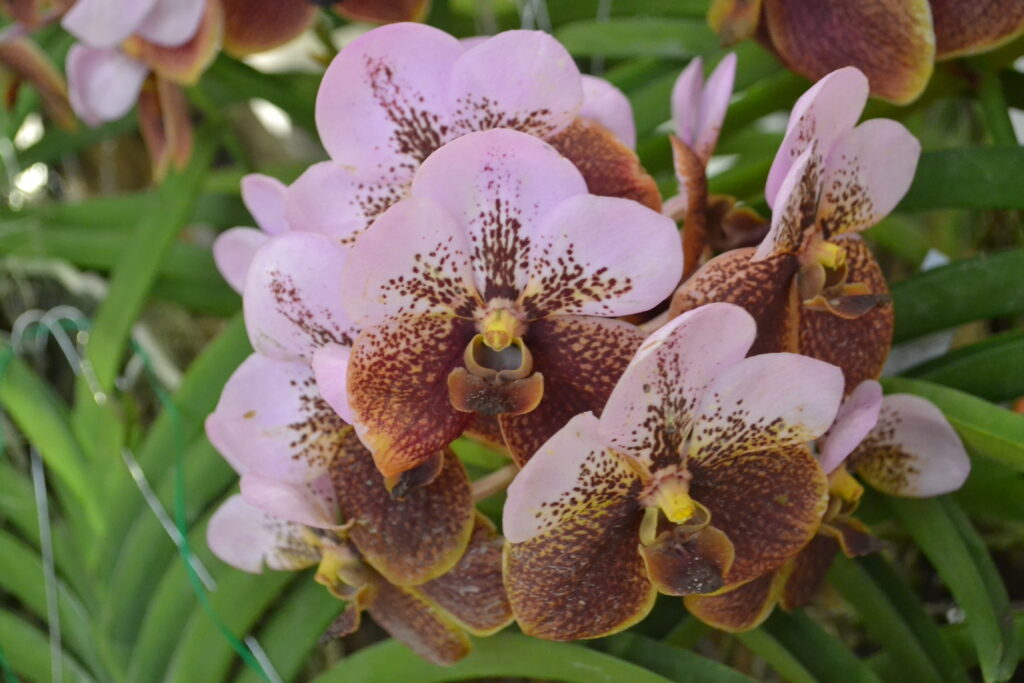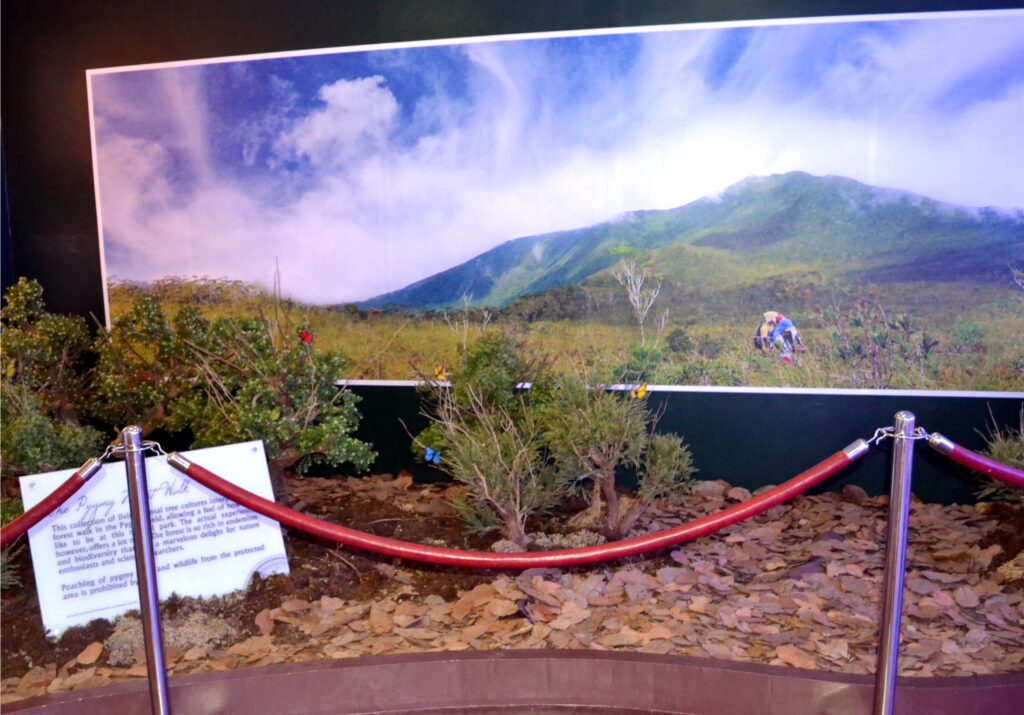Text and Photos by Henrylito D. Tacio
“If we are to build a world without hunger, we have to conserve and sustain biodiversity and use it equitably.” — Dr. M.S. Swaminathan, a former Ramon Magsaysay Awardee
***
Two national parks in the Davao region are included in the seven biodiversity sites located in the Philippines: Mount Apo National Park in Davao del Sur and Mount Hamiguitan National Park and Wildlife Sanctuary in Davao Oriental.
Both are protected areas that are part of the ASEAN Heritage Parks (AHPs). ASEAN refers to the Association of Southeast Asian Nations, which is composed of Brunei, Cambodia, Indonesia, Laos, Malaysia, Myanmar (Burma), the Philippines, Singapore, Thailand, and Vietnam. So far, 35 AHPs have been designated since the last inscription in 2014.
“AHPs are protected areas of high-conservation importance, preserving in total a complete spectrum of representative ecosystems of the ASEAN region,” explains the Los Baños, Laguna-based ASEAN Centre for Biodiversity (ACB), which serves as secretariat.
“These are established to generate greater awareness, pride, appreciation, enjoyment and conservation of ASEAN’s rich natural heritage, through a regional network of representative-protected areas, and to create greater collaboration among the ASEAN member-states in preserving their shared natural heritage,” ACB adds.
During the observation of World Tourism Day some years back, the ACB urges Filipinos to visit the seven biodiversity sites. Instead of going to famous tourist spots like Boracay, Cebu, Bohol, Batanes, and Palawan, it suggests going to designated AHPs where visitors can “enjoy history, culture and biodiversity richness all at the same time.”
Mount Apo
Take the case of Mount Apo. “Looking for some mountain-climbing adventure?” asked Pamela Quinto-Reblora, who wrote a piece on the country’s seven biodiversity sites. “Mount Apo, regarded as the last stronghold of the remaining population of the rare and endangered Philippine Eagle, is named after the majestic Mount Apo, a volcanic mountain rising to 3,143.6 meters and the highest mountain in the country.”
Apo, which means “ancestor,” “master,” or “grandfather,” is a flat-topped mountain with three peaks. It is capped by a 500-metre-wide (1,600 feet) volcanic crater containing a small crater lake. It is classified as a dormant but active Philippine volcano, whose most recent eruption is unknown, and none are verified in historical times.
When Republic Act no. 9237 was approved on February 3, 2004, Mount Apo became a protected area under the category of Natural Park with an area of 54,974.87 hectares (135,845.9 acres). Two peripheral areas of 2,571.73 hectares (6,354.9 acres) and 6,506.40 hectares (16,077.7 acres) as buffer zones were provided for its management and other purposes.
The Mount Apo National Park is considered by the Department of Environment and Natural Resources (DENR) as the center of endemism in Mindanao. It has one of the wealthiest botanical mountains in the region, hosting hundreds of rare, endemic, and threatened species of flora. Identified floral species includes 629 species, 42 of which are endemic, and 18 species are considered at risk, including the “waling-waling,” the country’s second flower icon (after sampaguita).

Waling-waling (scientific name: Vanda sanderiana) “is one of the finest orchid species endemic to the Philippines, desired by orchid growers and breeders alike for its showy and attractive flowers and ability to impart its vigor and floral characteristics to its progeny,” wrote Dr. Helen Valmayor in her book, Orchidiana Philippiniana.
A Pictorial Cyclopedia of Philippine Ornamental Plants described the exotic waling-waling in these words: “The flowers are flat, to eight centimeters across; the sepals and petals are obviate, bluish pink, with buff-yellow stain, and dull-crimson reticulations on the lateral sepals; the lip is small and concave, purple-red at base, strongly recurved and brownish purple at apex; with three prominent keels.”
The waling-waling, named in “allusion to a moth in flight,” was discovered on Mindanao in 1882. It used to grow on tree trunks in the rainforests of Davao, Sultan Kudarat, and other parts of the island. It is worshipped as “diwata” (fairy) by the native Bagobos.
The Mount Apo National Park is also home to one of the world’s largest eagles, the critically endangered Philippine Eagle, the country’s national bird. In 1896, the bird of prey was first discovered by English naturalist John Whitehead in Samar.

At first, it was called “monkey-eating eagle” because he thought it fed primarily on monkeys. So he gave it the scientific name, Pithecophaga jefferyi. The scientific name came from two Greek words: pitekos (monkey) and phagien (to eat). Jefferyi was the discoverer’s tribute to his father, Jeffrey, who funded his expedition.
In 1978, the old name was dropped and given its present name through Presidential Decree No. 1732 after it was learned that monkeys comprise an insignificant portion of the bird’s diet, which consists mostly of flying lemurs, civet cats, bats, rodents, and snakes.
A majestic bird, the Philippine eagle, stands a meter high, weighs anywhere from four to seven kilograms, and has a grip three times the strength of the strongest man on earth, according to the Philippine Eagle Foundation, Inc.
With a wingspan of nearly seven feet and a top speed of 80 kilometers per hour, the Philippine eagle can gracefully swoop down on unsuspecting prey and carry it off without breaking flight.
Mount Hamiguitan
The ACB also urges Filipinos to visit Mount Hamiguitan. “Nature and wildlife enthusiasts will definitely enjoy Mount Hamiguitan, which has one of the most diverse wildlife populations in the Philippines,” the ACB said. “This 1,620-meter-high mountain is in San Isidro, Davao Oriental.”
Aside from Philippine eagles, several species of Nepenthes inhabit the area, including the endemic Nepenthes peltata. The mountain has a protected forest area of approximately 2,000 hectares. This woodland is noted for its unique pygmy forest of century-old trees in ultramafic soil, with many endangered, endemic, and rare species of flora and fauna.

The International Union for Conservation of Nature Red List has identified at least 11 endangered vertebrate species. The Laguna-based Philippine Council for Agriculture, Aquatic, and Natural Resources and Development reported that the mountain is inhabited by five endangered species, 27 rare species, 44 endemic species, and 59 economically important species.
In June 2014, the Mount Hamiguitan Range Wildlife Sanctuary was added to the United Nations Educational, Scientific and Cultural Organization (UNESCO) list of World Heritage Sites.
UNESCO, in its website, said: “The property showcases terrestrial and aquatic habitats at different elevations, and includes threatened and endemic flora and fauna species, eight of which are found only at Mount Hamiguitan.”

